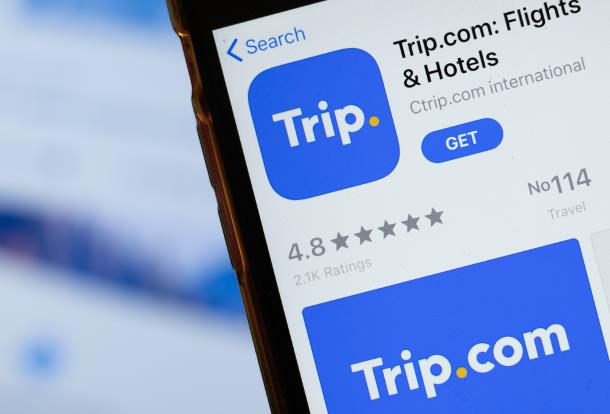By Ritesh Gupta, ChinaTravelNews – Personalisation, contextualization, predictive analytics, content management…if you ask any marketer about what is important out of all these, they would lap up all.
But the whole exercise can go futile if there is no solid set up for crafting a consistent digital experience.
The pace with which the so-called omni-channel shopping is evolving, the major challenge is to offer one integrated experience that is superlative. In fact, today marketers need to dig deeper to ascertain the complexity of managing the same. A major hurdle is to do away with the concept of disjointed set of systems.
It isn’t a straightforward task to streamline an ecosystem of digital marketing solutions comprising web content management, CRM, product information management, eCommerce and social engagement especially considering the fact the marketplace have over 2000 vendors/ solution providers to serve the entire ecosystem. And on top of it, if any brand is targeting multiple markets, then it does end up being a complex scenario.
Significance of WEM
As a specialist in this arena, Arjen van den Akker, Product Marketing Director at SDL, asserts that web experience management (WEM) needs to lay a strong foundation for any travel e-commerce brand’s digital strategy (be it for one or multiple markets).

Arjen van den Akker, Product Marketing Director at SDL
Organizations can’t afford to run any digital touchpoint in a disjointed manner, said Arjen. He explained by citing an example: A sum of experiences on a website can’t have different backbones or be driven by different set ups. At the end of any session, if a customer isn’t making smooth transition from web content management to e-commerce to support, then it would mean a customer might have to re-do something (say re-fill information on a support page) for a task. And this can’t be afforded by any brand that aspires to offer a sublime digital interaction. He added that today’s WEM systems enable highly dynamic, engaging digital experiences through capabilities including digital media management, predictive targeting and personalization.
Role of WEM in delivering optimal experience
A set of critical questions that the major airlines or OTAs such as Ctrip need to answer is how to support their digital infrastructure for multi-lingual websites, various devices, uninterrupted uptime, optimal site design etc. as these companies increasingly target non-Chinese customers.

Importantly, the days of managing content on page-by-page basis are over.
According to SDL, different components of pages, be it for images, content assets, videos etc. will be presented to each site visitor based on the visitor’s search terms used, browsing pattern, past transactions and more. Furthermore if one visits that URL while on a device such as a smartphone, this user may end up viewing something else again: say distinct content based on location, resized or alternative imagery etc. A major contribution of WEM would be managing of content assets, websites and language variations spanning over various channels and devices.
If we consider Ctrip’s main site, it is capable of translating content in at least 12 languages. Over the last year or so, Ctrip has unveiled local PC website, mobile website and mobile app for Korea, Singapore and Hong Kong. An integral aspect is to manage intricacy of localization - culturally relevant imagery, keywords, taxonomies (allowing a site to connect, relate and classify a website’s content), page design etc. For any brand that operates multi-lingual platforms, the core issue is to balance cost, quality and speed, and a top-notch WEM system should be adept in this context.
Other than being a central repository for content as well as tailoring content according to a visitor, the system should also pave way for localization of SEO, as well as contribute in uplifting a website’s performance.
Three core issues
Specialists point out that a core pillar of the whole exercise is taxonomy. Other than classifying websites’ content, it also plays its part in personalisation i. e. accessing content tagged with certain vocabularies. For instance, if I have looked at 15 articles tagged with car rental in Shanghai, a brand could then display an advertisement for the same. Another pillar is context data point – this would pave way for personalisation based on geographical/ IP look-up, device used and weather.
Arjen says till date even big brands struggle to manage and optimize content. “They aren’t either using taxonomy or tagging,” he says.
As for why organizations struggle to optimize experience, Arjen also referred to internal sourcing. “Manpower is a big issue when it comes to coming to grips with content needed for today’s digital environment.”
And finally a major challenge pertains to data management. The biggest barrier to a single customer view is the persistence of technology and corporate silos. An organization is equipped with data emanating from different sources, could be web analytics, CRM, booking engine etc., but the major challenge is to manage and create a unified picture of this data. As acknowledged by experts, web, email and mobile are great places to start then expand to call centre, operations and beyond. This allows one to build the business case to deploy the solution across an organization.
“We focus on customer profile analytics, and data trickles seamlessly from different sources. This is useful for marketers to initiate any campaign – target a specific audience in any market,” said Arjen. Also, what to serve to users when they access a digital touchpoint is a blend of manual input and automation. “There could be rules that are based on availability, margin of products, etc. Once this is finalized, the content or inventory is shown as per the rules designed. But there could be a need to influence the process at any stage, overriding the automated setting.”
Level of sophistication
It is fascinating to fathom when personalisation and contextualization come into play, and how they impact a digital experience.
For example, you visit a website for the first time. You are browsing from a location which is extremely cold. And you are looking for a beach holiday or a sunny destination. From context perspective, there can be ample clues – your device, geographical/ IP look-up and weather. So in all probability any savvy travel e-commerce site would serve relevant content. And this isn’t personalisation in true sense.
But what if you are visiting the site repeatedly? What would happen after five visits?
With evaluation of each session, device tracking etc. efforts would be made to stitch your identity. So if you show tendency towards “a sunny destination” in your browsing pattern, you might be clubbed in a group of “sunny holiday seekers”. You persona would be mapped, and next time when you open an email or are served a banner ad via retargeting, you might end up looking at an ad/ message that essentially is an extension of where or what you left on the website. This is what falls in the domain of personalisation.
“Personalisation and contextualization – both require a certain level of sophistication,” asserted Arjen.
Globally consistent, locally unique
The definition of being global and at the same time connecting locally has touched a new paradigm today. There are two facets to it.
One, any entity that aspires to run multiple sites in various countries needs to be swift enough to serve audience in their preferred language. As SDL recommends, it would call for a content workflow with integrated translation reviews to dramatically reduce turnaround time for multilingual content. Second, there is a need to offer a superlative digital experience across any device. And throughout one would need to ensure there is a joined-up conversation that carries across devices and channels, and be fit enough to suit local nuances throughout brand interaction. One can count on the prowess of WEM to fulfil such aspirations.




